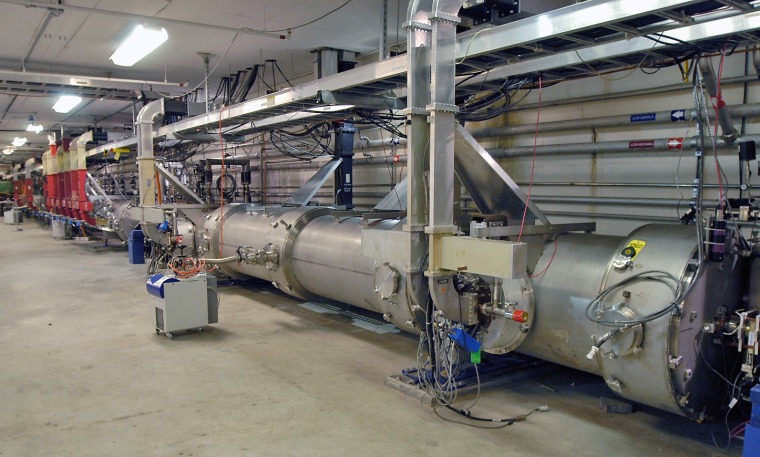A new laser light color that shines 100 times brighter than any other laser could lead to a new method for determining the age of materials between 100,000 and 1 million years.
The color is called "vacuum ultraviolet" because it is absorbed by molecules in the air, requiring its use in a vacuum, according to the Department of Energy's Thomas Jefferson National Accelerator Facility, where the color was created.
Scientists hope to use the new laser light in radio-krypton dating, a technique that uses laser light to measure isotopes of krypton. This method was first used in 2004 to determine that water in an aquifer beneath the Sahara Desert is a million years old.
The ultraviolet laser would be used to create so-called metastable atoms for use in this dating method. Targets for dating include the polar ice cap. Carbon dating, the most familiar method, peters out at about 62,000 years. Potassium-argon dating is a widely used technique to date more ancient materials — including fossils representing extinct branches of humanity's family tree. Radio-krypton dating could serve as another method for documenting dates in this key geologic era.

Researchers used the lab's free-electron laser facility to create the "vacuum ultraviolet" laser light. According to the lab, this is how it works:
In the FEL, electrons are stripped from their atoms and whipped up to high energies by a linear accelerator. The electrons are then sent into the ultraviolet beamline, where they encounter the UV wiggler. A wiggler is a device that uses magnetic fields to shake the electrons, forcing them to release some of their energy in the form of photons. As in a conventional laser, the photons bounce between two mirrors in the optical system and are then emitted as a coherent beam of light.
Scientists will spend the next few months getting the laser ready for experiments, which they hope to begin conducting in March.
Tip o' the Log to Discovery News' Amy Dusto.
John Roach is a contributing writer for msnbc.com. Connect with the Cosmic Log community by hitting the "like" button on the Cosmic Log Facebook page or following msnbc.com's science editor, Alan Boyle, on Twitter (@b0yle).
